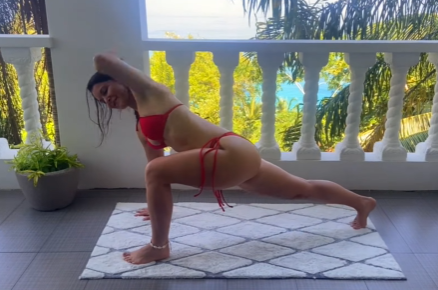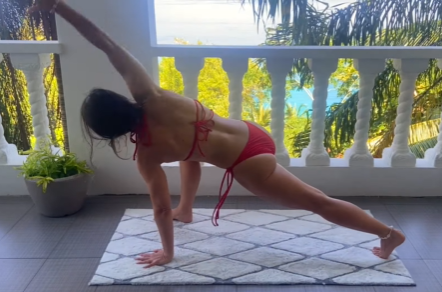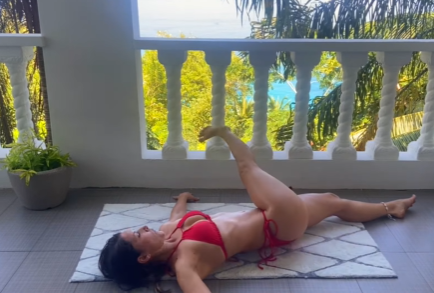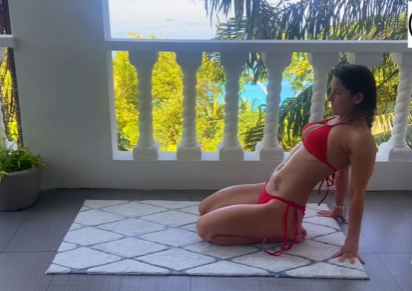
Aging is a natural part of life — but stiffness, pain, and limited movement don’t have to be. With the right mobility and flexibility routine, you can keep your body feeling youthful, your joints supple, and your energy flowing freely. This anti-aging full-body mobility and flexibility routine is designed to counteract the effects of time, desk posture, and daily tension. It gently releases tight muscles, restores range of motion, and helps you move with ease — no matter your age or activity level.
This 1000-word guide walks you through a soothing, restorative session that promotes healthy circulation, joint lubrication, and mindful movement — the keys to staying strong, mobile, and pain-free for life.
Why Flexibility and Mobility Matter as You Age
As we grow older, muscles naturally lose elasticity, joints stiffen, and connective tissues become less resilient. This process is influenced by inactivity, dehydration, and long hours spent sitting. The result? Limited mobility, chronic tightness, and decreased vitality.
Mobility and flexibility training reverse these patterns by keeping joints nourished and muscles elongated. Regular stretching increases blood flow, improves posture, and enhances balance — all of which are crucial for maintaining independence and confidence as you age.
Even more importantly, mindful movement relieves mental tension and supports emotional well-being. The calm focus you bring to stretching helps reduce stress hormones and supports relaxation — keeping both body and mind young.
Warm-Up: Awakening the Body (5 minutes)

Before you begin deeper stretches, it’s essential to awaken your muscles and prepare your joints. This short warm-up increases circulation and primes the body for deeper release.
1. Gentle Joint Circles (2 minutes)
Start standing or seated. Slowly roll your wrists, elbows, and shoulders in circular motions. Then move down to your hips, knees, and ankles. These slow, controlled circles lubricate your joints and release morning stiffness.
2. Standing Side Stretch (1 minute)
Inhale as you raise your arms overhead, exhale as you lean to one side, feeling a long stretch through your ribs and waist. Switch sides. This movement awakens the spine and lengthens the torso.
3. March or Shake Out (2 minutes)
March in place or gently shake out your arms and legs. Allow your body to loosen up and feel the energy starting to flow.
Upper Body Mobility & Release (10 minutes)

1. Neck Rolls (2 minutes)
Sit or stand tall. Drop your chin gently toward your chest and slowly roll your head side to side. Keep your shoulders relaxed. This helps release tightness in your neck and upper traps — common culprits of stiffness and headaches.
2. Shoulder Mobility Circles (2 minutes)
Extend your arms out to the sides and make slow, controlled circles — first forward, then backward. Focus on smooth, fluid movement. Your shoulders are like hinges — they need regular movement to stay pain-free.
3. Cat-Cow Flow (3 minutes)
Come to hands and knees. Inhale as you arch your back, lifting your chest (Cow Pose), and exhale as you round your spine, tucking your chin (Cat Pose). This rhythmic flow keeps your spine flexible and encourages deep breathing.
4. Seated Twist (3 minutes)
Sit cross-legged or in a chair. Inhale, lengthen your spine; exhale, twist gently to one side, using your hand on your knee for support. This movement relieves tension in the back and improves spinal rotation — essential for graceful aging.
Lower Body Focus: Hips, Legs, and Hamstrings (15 minutes)

The hips and legs are often the first areas to lose flexibility. Releasing them daily can dramatically improve your mobility, balance, and posture.
1. Hip Circles (2 minutes)
Stand with feet hip-width apart and hands on your hips. Slowly rotate your hips in big circles — clockwise, then counterclockwise. This move lubricates the hip joints and eases lower back stiffness.
2. Low Lunge Stretch (2 minutes per side)
Step your right foot forward into a lunge, dropping your left knee to the floor. Keep your chest lifted as you sink your hips forward. This deep stretch targets tight hip flexors, which often shorten from sitting.
3. Seated Forward Fold (3 minutes)
Sit with your legs extended in front of you. Inhale to lengthen your spine, exhale to fold forward. Don’t worry about touching your toes — focus on a gentle pull in your hamstrings. Slow, deep breathing enhances release and calms the nervous system.
4. Inner Thigh Stretch (Butterfly Pose) (3 minutes)
Bring the soles of your feet together and let your knees fall open. Hold your feet and gently press your knees toward the floor. This opens your inner thighs and improves pelvic mobility.
5. Calf Stretch (2 minutes per side)
Stand facing a wall, place one foot behind you, and press your heel down as you lean forward. This restores flexibility in your calves and prevents tightness that can affect your ankles and knees.
Core & Back Rejuvenation (10 minutes)

A strong, supple core supports your entire body and protects your spine.
1. Supine Spinal Twist (2 minutes per side)
Lie on your back, bring one knee across your body while extending the opposite arm to the side. Look toward your extended arm. This twist stretches the lower back and aids digestion.
2. Bridge Pose (3 minutes)
Lie on your back with knees bent and feet flat on the floor. Press into your feet and lift your hips, keeping your shoulders grounded. This move strengthens your glutes, opens your chest, and releases your hip flexors — key muscles for longevity.
3. Seated Side Bend (2 minutes per side)
Sit comfortably with legs crossed. Inhale, reach your right arm overhead, and lean left. Keep your chest open. This gentle bend stretches the waist, intercostal muscles, and lower back.
4. Child’s Pose (3 minutes)
Kneel, bring your big toes together, and fold forward with arms extended. Rest your forehead on the floor. This restful pose decompresses the spine and deeply relaxes the nervous system.
Full Body Stretch & Cool Down (10 minutes)
Now that your body is open and loose, end your session with deep, rejuvenating stretches to fully restore calm and balance.
1. Standing Forward Fold with Shoulder Stretch (3 minutes)
Stand tall, clasp your hands behind your back, and fold forward, letting your arms lift overhead. Feel your hamstrings lengthen and your shoulders open.
2. Pigeon Pose (2 minutes per side)
From all fours, bring your right knee forward and extend your left leg behind you. Fold gently over your front leg. This powerful hip opener releases stored tension — emotional and physical — from the hips.
3. Legs Up the Wall (5 minutes)
Lie on your back with your legs resting up against a wall. Close your eyes and breathe slowly. This pose promotes circulation, drains lymphatic fluid, and soothes the mind — perfect for anti-aging and stress relief.
Breathwork & Mindful Relaxation (5 minutes)

Flexibility and mobility training are as much about the mind as the body. End your session with conscious breathing.
1. Deep Belly Breathing (3 minutes)
Lie comfortably on your back. Place one hand on your belly and the other on your chest. Inhale deeply through your nose, feeling your belly rise; exhale slowly through your mouth. Deep breathing oxygenates your muscles and calms your nervous system.
2. Body Scan Relaxation (2 minutes)
Gently bring awareness to your toes, feet, legs, torso, arms, and head. Soften each part with every exhale. Feel the gentle pulse of relaxation washing through your body.
Tips for Anti-Aging Flexibility
- Practice daily. Even 15 minutes a day maintains fluidity and ease of movement.
- Stay hydrated. Water keeps muscles supple and joints lubricated.
- Move with intention. Slow, controlled movements enhance awareness and reduce injury risk.
- Combine with strength. Mobility and strength together preserve balance and joint integrity.
- Breathe and enjoy. Flexibility is not a competition — it’s a lifelong relationship with your body.
Conclusion
Aging gracefully isn’t about resisting time — it’s about moving through it with vitality and grace. This Anti-Aging Full Body Mobility & Flexibility Routine gives you the tools to stay strong, open, and resilient. With consistent practice, you’ll notice smoother movement, fewer aches, and a more youthful, radiant energy.
Each stretch is an act of self-care — a reminder that your body is not aging against you but evolving with you. Release, relax, and keep moving — because the secret to staying young is to stay in motion.


